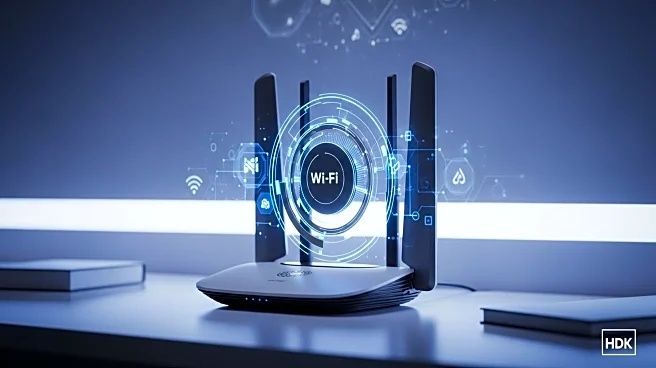What is the story about?
What's Happening?
TP-Link has successfully tested an early prototype of Wi-Fi 8 hardware, marking a critical milestone in the development of the next generation of connectivity. The prototype validated Wi-Fi 8's beacon and data transfer capabilities, proving its viability for future consumer products. Wi-Fi 8 aims to improve real-world performance and connection reliability, focusing on keeping devices online and stable rather than chasing faster speeds. The new standard will utilize 2.4GHz, 5GHz, and 6GHz bands, with a theoretical maximum channel bandwidth of 320MHz and peak data rate of 23Gbps. Consumer devices are expected to be available ahead of the standard's ratification by the IEEE, anticipated by 2028.
Why It's Important?
The development of Wi-Fi 8 represents a significant advancement in wireless connectivity, addressing the growing need for reliable performance in environments with low signal or high network loads. By managing more devices at once and reducing lag, Wi-Fi 8 promises to enhance user experiences in gaming, streaming, and video calls. This shift towards prioritizing connection stability over speed is crucial as the number of connected devices continues to rise. TP-Link's successful prototype test positions the company as a leader in the development of next-generation Wi-Fi technology, potentially influencing the future of wireless communication standards.
What's Next?
As Wi-Fi 8 development progresses, TP-Link is likely to focus on refining the technology and preparing for consumer product launches. The company may collaborate with other industry leaders to ensure compatibility and integration with existing devices and networks. The ratification of the Wi-Fi 8 standard by the IEEE will be a key milestone, paving the way for widespread adoption and implementation in various sectors, including home networking and enterprise solutions.
AI Generated Content
Do you find this article useful?














